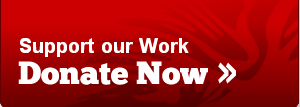By Abu Bakarr Jalloh
The following recommendations incorporate strategic interventions based on best practices; evidence of cost-effective interventions; WHO, UNAIDS and UNFPA guidelines; as well as recommendations from key stakeholders and population group’s participation in Kills, FGDs and regional consultations.
Particular emphasis was placed on the guidance and principles from the WHOs 2017 consolidated guideline on sexual and reproductive health and rights of women living with HIV, and its 2018 recommendations on adolescent sexual and reproductive health and rights. The recommendations are mostly classified according to the same thematic areas as the NASP and the global fund funding request, which may also be used for gender and HIV integration into other multispectral policies and processes.
- Increase access to and completion of quality primary and secondary education, including informal and vocational learning, for adolescent girls and young women (AGYW).
- Comprehensive sexuality education (CSE) in and out of school (WHO, 2018)
- Pre-exposure prophylaxis (PrEP) and SRHR services for AGYW and key populations is high burden districts.
- Differentiated HIV testing services (HTS) for women, AGYW, men and young boys and key populations.
- PrEP for HIV-negative female sex workers, men who have sex with men, people who inject drugs.
- Condom promotion, including female condoms
- Addressing transactional sex among AGYW, in line with the UNAIDS recommendations on integrating initiatives into existing multicomponent HIV prevention interventions programmes (structural, behavioural, biomedical) and wider social and development programmes.
- HPV vaccination: 90% of girls fully vaccinated with the HPV vaccine by age 15.
- Differentiated HIV testing services for men and women
- Implementation of adolescent-friendly services, including strategies to reduce stigma and discrimination, especially surrounding adolescent girl’s sexuality.
- Improving retention and adherence in ART among adults, adolescents, and children.
- Reducing AIDS, non-AIDS mortality and co-morbidities through, a) linkage of patients and referrals from the community to the health centres; b) monitoring and management of advanced HIV disease and cancers; c) provision and uptake of preventive therapies for all people living with HIV, addressing specific gender-related barriers; and d) screen and effectively treat NCDs in people living with HIV.
- Eliminating financial barriers, such as user fees and other out-of-pocket expenses and addressing “under the table” payments, which affect women and key population groups in all their diversity.
- Improve primary prevention of HIV among women of childbearing age, specifically for AGYW, pregnant and breastfeeding women.
- Reduce unplanned and unintended pregnancies among women living with HIV
- Offer GBV services to women living with HIV, increase complaint desk officer in the drop-in centres.
- Interventions for women living with HIV on self-efficacy ad empowerment around SRHR to maximise their health and fulfil their rights.
- Engage the male partners of AGYW, pregnant and breastfeeding women and promote male involvement in accessing SRH services.
- Provide mental health support, such as support groups and peer support
- Prevent vertical transmission of HIV through screening and identification of women and their partners during pregnancy and breastfeeding.
- Integration of HIV and SRH services, including screening women living with HIV as soon as they are diagnosed with HIV (regardless of age). Services integrated into existing, HIV care and treatment clinics, ante-natal care, well-women clinics and school-based health outreach are points of entry for reaching women and girls.
- Understanding and addressing sociocultural, economic and structural barriers to accessing services and create an enabling environment.
- Promote a screen-and-treat approach.
- Scale up HPV vaccination as a public health priority.
- TB prevention, screening, diagnosis and treatment, as well as HIV prevention, diagnosis treatment and care service should be integrated with those for maternal and child health and prevention of HIV vertical transmission.
- Improve the recording and reporting of TB data disaggregated by sex and age, including for TB treatment initiation and outcomes.
- Promote the involvement of males (boys and men) in TB/HIV services.
- Reduce stigma and discrimination against people living with HIV in all their diversity including vulnerable and key population.
- Gender mainstreaming of all human rights-related strategies
- Community mobilization of sex workers.
- Promote and protect SRHR, address GBV and social protection
- Reduce harmful gender norms, stereotypes and GBV.
- Scale up HIV-sensitive child protection case management in high HIV burden districts
- Leadership and governance, including sustained and visible role for women and girls vulnerable groups and key populations in the HIV response at the national and subnational levels.
- Mainstream gender equality and a human rights-based approach at all levels of the HIV response.
- Age-and sex-disaggregated; information on key populations breakdown by a geographic areas should be included in programme data, surveys and routine reporting and used to inform programme planning and monitoring. This information should be integrated into national systems instead of being limited to vertical systems.
- Ensure gender integration in prioritized interventions as an integral component of health system strengthening, thereby promoting sustainability.
- Mobilization of governmental and non-governmental domestic resources to support the gender equality and human rights components of the HIV response.
- Increase the availability, effectiveness, and retention of human resources with skills in gender equality and human rights approaches in order to deliver integrated high-quality services for all diseases, including HIV.
- Strengthen community systems for HIV epidemic control, child protection and GBV prevention.
- Strengthen community-based monitoring and reporting on HIV, SRHR and GBV, including community-led advocacy by women living with HIV, youth, AGYW and key populations based on scorecards.
- Strengthen the capacity of community systems to effectively achieve structural changes, increase demand for services, reduce stigma and discrimination and promote gender equality and human rights.





